Red squirrels are small, tree-climbing rodents native to Eurasia. These squirrels have long bushy tails and pointed tufts of fur over their ears.
There is also a North American squirrel species by the same name, however most people call this species the “American red squirrel.” For this article, we will focus on the Eurasian red squirrel species. Read on to learn about the red squirrel.
Description of the Red Squirrel
Red squirrels are, well, red. However, they do have white or cream-colored underbellies, and their coats darken to a grayish color in the winter. Their bodies are usually around eight inches long, but their tails can add another eight inches to that length.
The easiest way for you to distinguish this species from other squirrels is by looking at their heads. Red squirrels have long tufts of hair that give their ears an elongated, pointed look.
Interesting Facts About the Red Squirrel
These cute little mammals range across Europe and Asia. Though their global population is safe, certain localized populations are failing. Learn more about why this is occurring below.
- Squirrel Surplus – Humans introduced the eastern gray squirrel, an animal that usually lives in North America, into Britain sometime during the 1870s. Now, gray squirrels are spreading throughout the United Kingdom. The spread of the gray squirrel species is threatening the native red squirrels.
- Sick Squirrels – The two species do not directly injure one another, so why should new squirrels cause the native species to die off? One reason is sickness. The gray squirrels carry parapoxvirus, which does not kill them, but does kill the red squirrels.
- Fewer Foods – The gray species is larger than their red counterparts. This allows them to collect and store more of the available food sources. With less food to go around, the red squirrels are the ones that suffer.
- Pine Predators – One positive impact of this decline is the protection placed on European pine martens. Scientists discovered that the pine martens prefer eating the slower, fatter gray squirrels. Basically, more pine martens, fewer gray squirrels, and more red squirrels.
Habitat of the Red Squirrel
Because they live in trees, these little mammals need habitats with plenty of adult tree species. They prefer two types of forests – broadleaf and coniferous. These forests have large, adult trees with plenty of seeds and nuts for the squirrels to eat.
Adult trees also allow the squirrels to create nests in secure locations far from the ground. Because parks usually plant similar tree species, these squirrels also sometimes live in more urban areas.
Distribution of the Red Squirrel
This species lives throughout the northern hemisphere in Eurasia. They live across nearly all of Europe, and through Russia and other areas in Asia. Sadly, in Italy, Ireland, and Great Britain, the populations of red squirrels are plummeting. However, the population across their range as a whole is widespread and common.
Diet of the Red Squirrel
Red squirrels are mostly herbivorous, but scientists consider them omnivores. Their diet usually consists of pinecone seeds, hazelnut, chestnuts, beech nuts, berries, fungus, and new leaf growth.
However, research has shown these creatures will also eat eggs and small mammals on rare occasions. This behavior is consistent with that of other members of the rodent family.
Red Squirrel and Human Interaction
Humans introducing gray squirrels into the United Kingdom is not the only interaction that harms red squirrels. Like most other animal species, human interaction is detrimental to this species. As our population grows, cities continue to spread, and we destroy natural habitats in the process.
More people also means more cars, and thus more road-killed squirrels. There are many different ways for humans to negatively impact the ecosystem around them. However, the IUCN lists red squirrels as Least Concern.
Domestication
Humans have not domesticated red squirrels in any way.
Does the Red Squirrel Make a Good Pet
No, red squirrels do not make good pets. Even though they look cute and furry, they are wild animals, and any wild animal can bite. In many places, it is also illegal to own red squirrels as pets.
Red Squirrel Care
Most red squirrels in zoos are animals that humans rescued, and they cannot live in the wild. Because they live in the trees, keepers provide them with plenty of climbing opportunities, branches, ropes, and artificial perches and ledges.
Like all rodents, their teeth grow continuously, and they must chew to grind them down. Branches and other chewing opportunities are very important for their care. Finally, keepers provide a variety of seeds and nuts for them to eat, with the occasional fruits and berries.
Behavior of the Red Squirrel
These rodents are not particularly social, but they are not territorial either. Many squirrels can have overlapping feeding areas. Because of this, they do develop dominance hierarchies, but do not remain in social groups.
They spend most of their time searching for food, and are most active during the early morning and late afternoon. During the day the hide in their nests, where they are safe from predators.
Reproduction of the Red Squirrel
Female squirrels can breed and produce 2 litters of offspring per year. After mating, the female’s gestation period is just over a month long, then she gives birth to a litter of around three babies, called “kits.”
The kits begin searching for their own food when they are 40 days old, but their mothers do not fully wean them until they are 8 to 10 weeks old. Rather than reaching sexual maturity at a certain age, female squirrels must reach a certain size or weight.

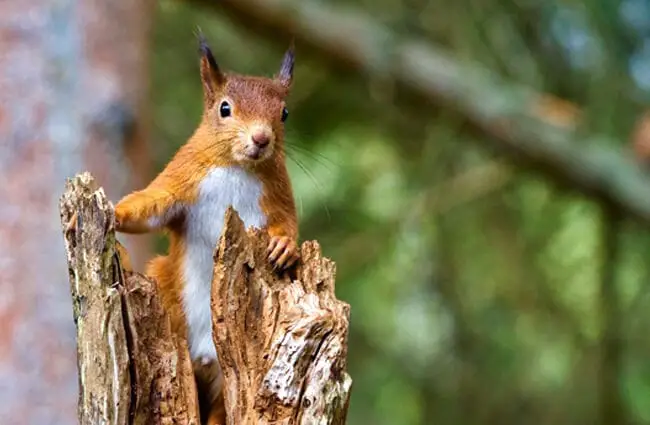
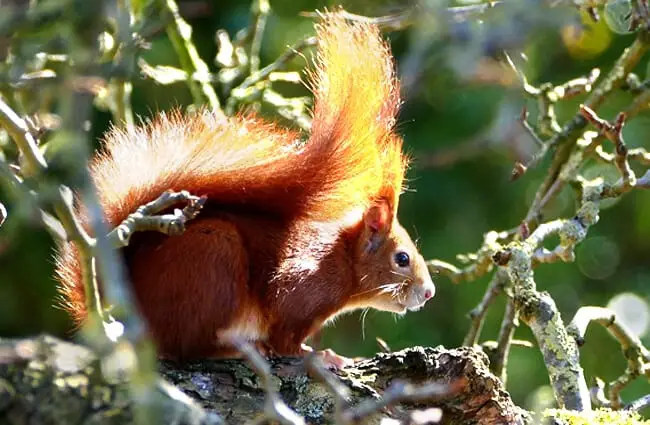
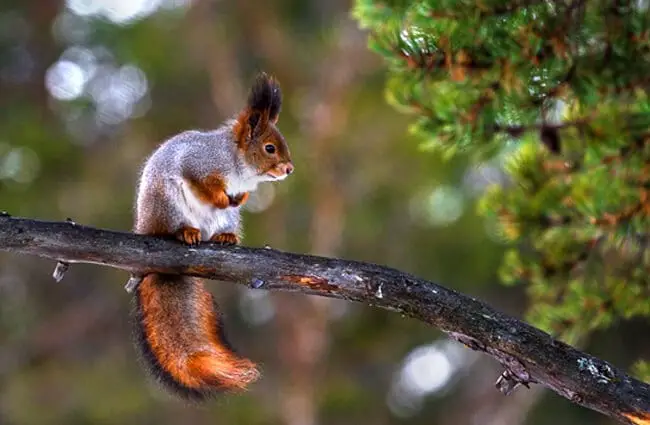
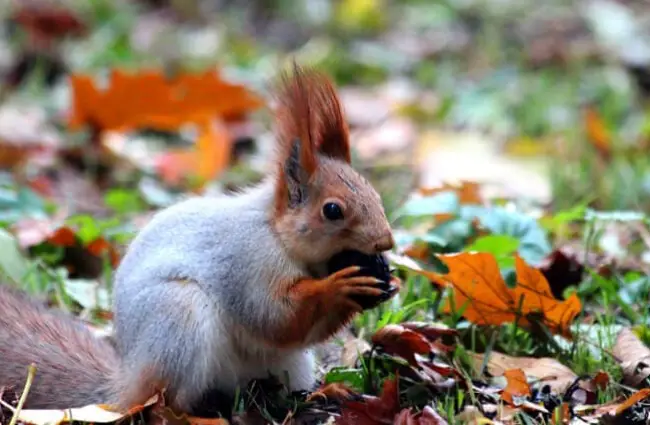

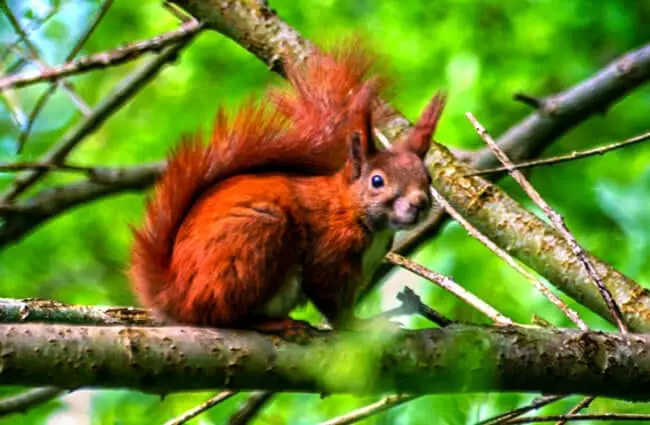

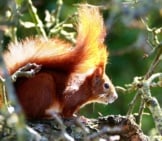
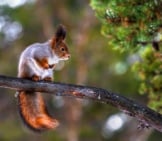

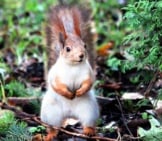
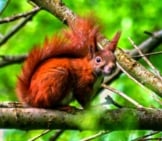
![Red Angus Closeup of a beautiful Red Angus cowPhoto by: U.S. Department of Agriculture [pubic domain]https://creativecommons.org/licenses/by/2.0/](https://animals.net/wp-content/uploads/2020/03/Red-Angus-4-238x178.jpg)












![Red Angus Closeup of a beautiful Red Angus cowPhoto by: U.S. Department of Agriculture [pubic domain]https://creativecommons.org/licenses/by/2.0/](https://animals.net/wp-content/uploads/2020/03/Red-Angus-4-100x75.jpg)

